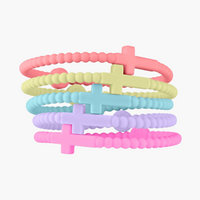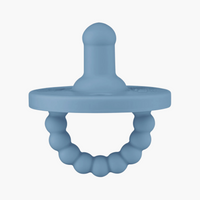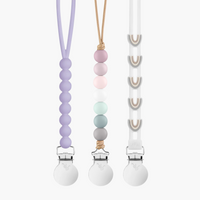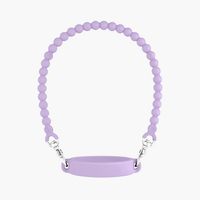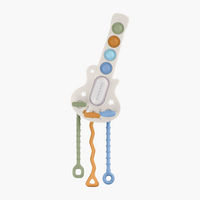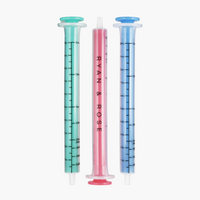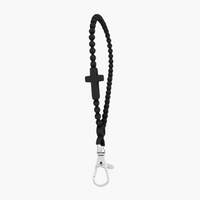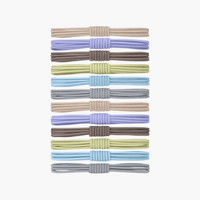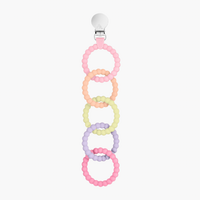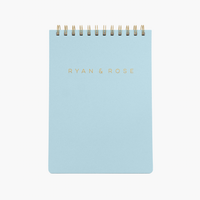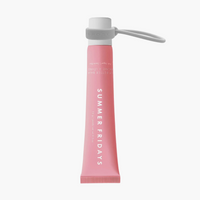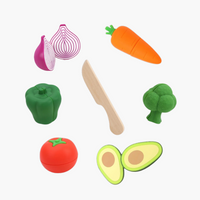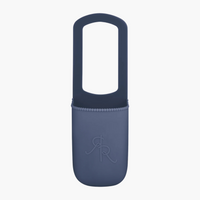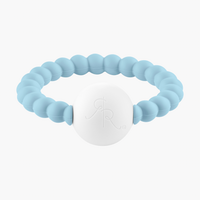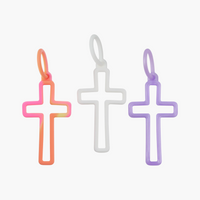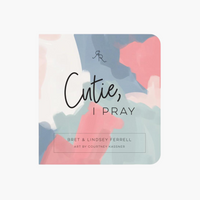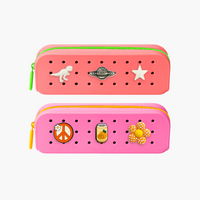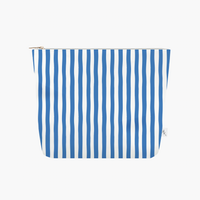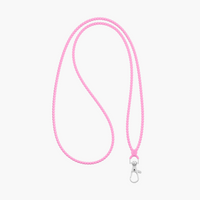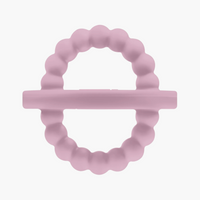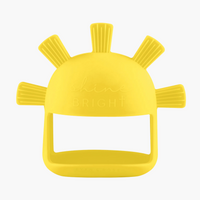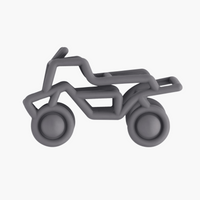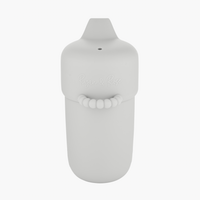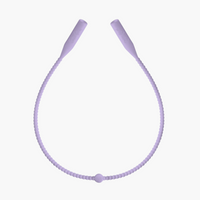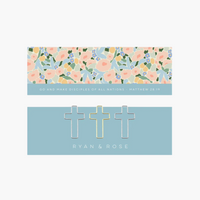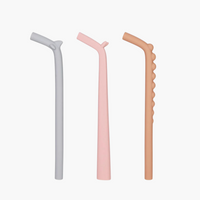
Pacifiers come in all sorts of shapes and sizes. It’s easy for a new parent to feel overwhelmed by all their choices for shape and style. By reading our ultimate guide to the different pacifier shapes, you can begin narrowing your scope to find your baby's perfect option. Learn about the many shapes you have to choose from on the journey to finding the ideal paci for your little cutie.
Guide to Pacifier Shapes
Every baby is different. They each have a unique personality, and some have stronger preferences than others. Some babies are a bit more particular about the perfect pacifier. This means you’ll likely need to try different shapes until you narrow down what works best for your little one.
Here are the most common pacifier shapes:
- Round: Long and rounded
- Flat: Lays flat in the baby’s mouth
- Slant: Positions between the top and bottom jaw
- Bulb: Larger and rounded at the tip
Choosing the perfect pacifier takes time and may require a bit of trial and error as you experiment with various types.
Round Paci
This type of binky is longer and slightly rounded at the tip. These are often great for young babies getting a handle on the sucking sensation required for feeding. Some pacifier makers even create separate stages for this type of pacifier so that your baby can use it before and after their teeth come in.
Flat Pacis
This style is flattened on both sides. Some babies prefer this option because it’s more symmetrical and will lay flat inside their mouths.
Slant Pacis
Next up in this guide to different pacifier shapes are slant binkies. Some also refer to this shape as orthodontic pacifiers, and they’re great because they position between the top and bottom jaw. This also allows for more tongue movement around the paci.
Bulb Pacis
A bulb nipple is the most like a mother’s breast, and using this paci shape may be the most soothing to a breastfed baby since they already understand the shape. This is similar to a round-shaped pacifier, but the nipple is larger.
How To Find the Right Shape
Finding the perfect paci shape may take time because every baby is different. Your first child may have preferred a flat paci, but your second baby may prefer a bulb-shaped one.
To find your baby’s definition of the perfect pacifier, you’ll have to do some trial and error. For example, if you buy a properly-sized round binky and they constantly spit it out, try an orthodontic paci. Give each size a chance until you find the one that soothes your bundle of joy.
Benefits of Using a Pacifier
Nearly every parent adds pacifiers to their list of must-haves when creating a registry before their baby arrives; this is because pacis are great tools that benefit your baby in many ways. For example, binkies:
- Decrease the risk of SIDS
- Soothe babies
- Distract babies
Preventing SIDS
Many medical experts agree that allowing your baby to sleep with a paci can help prevent SIDS. Researchers aren’t currently sure why this is the case, but various studies have concluded that pacis help. Keep in mind that you shouldn’t place the pacifier back into the mouth of a sleeping baby; instead, place the paci in their mouth as you tuck them in.
Relaxing Your Child
Calming a crying baby sometimes feels impossible, and you may feel so exhausted that you want to cry right along with them. Pacifiers help relax babies by giving them something to suck on. As a result, they’ll feel calmer and fall asleep easier.
Paci Tip
Remember to clean the pacifier between uses to remove bacteria and other germs. Some materials, such as silicone, can go in the top rack of the dishwasher to make cleaning faster for parents. You can also clean the pacifier by allowing it to soak in soapy water, then washing it off with a sponge or cloth. Most seasoned parents recommend washing the paci in the sink before each use and placing it in the dishwasher a few times per week.
How To Introduce the Pacifier
Many parents worry whether pacifiers interfere with breastfeeding, and while these fears are understandable, there’s no need to worry! Any nipple confusion a baby may encounter is only temporary.
There is no perfect time to introduce a paci; babies naturally know to suck on things placed into their mouth. However, most experts recommend waiting until your baby is 3 to 4 weeks old before introducing a paci. This gives both you and your baby time to adjust and establish a routine. If you solely breastfeed until this point, try bottle feeding before introducing the paci. This makes the introduction of an artificial nipple easier for your baby.
Try Various Options
If you give your little cutie a slant pacifier and they spit it out, try a round one. Some babies prefer the way a specific paci shape feels in their mouth.
Be Patient
Some babies don’t take to the paci right away, no matter what shape or material it is. Listen to your baby and hold off on introducing the pacifier if they keep spitting it out despite the shape. They may not be ready for a paci at this stage of infancy.
Tips for Buying the Best Pacifier
You must consider the pacifier’s material. Usually, this means choosing between silicone and rubber latex binkies; in most cases, a silicone paci is the best. Latex allergies are common, and silicone pacis are easier to clean since most are dishwasher safe. Plus, silicone won’t harbor bacteria, which is important since this item goes into your precious child’s mouth.
Shop for Quality
You only want the best when searching for items for your baby. Ryan & Rose sells silicone pacifiers for the many life stages your baby goes through. We even sell great two-in-one pacifiers that act as a paci and teether! Our binkies are dishwasher safe (on the top rack only) and perfect for your little cutie. When you buy the best baby essentials, you help ensure your child flourishes as they grow and explore the fascinating world around them.




